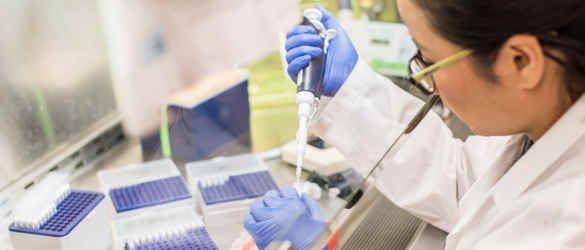
Inflammation, ageing and AMD
One of the main risk factors for age-related macular degeneration (AMD) is increased age. Many other eye diseases, such as glaucoma and cataracts, also become more common as you grow older. This is partly due to changes that happen as we age and as the cells become more damaged over time.
Inflammation also plays a role in AMD, and, due to ageing, cells are less able to combat the inflammation. This can lead to further damage to the cells, which contributes to AMD.
Inflammation
AMD is very closely linked to inflammation. Scientists have connected inflammation to the abnormal blood vessel growth that occurs in wet AMD. Also the increase in cell death which leads to geographic atrophy in dry AMD can be attributed to inflammation. We have found that some genes that are involved in inflammation are associated with increased risk of AMD.
Inflammation is usually activated by infection or cell damage, and once the threat is removed the inflammation stops. However, some researchers believe that in AMD the inflammation is overactive, or continuous.
Oxidative stress can lead to inflammation, and this has been proven to play a role in the risk of developing AMD, and how fast it progresses. Smoking can lead to the release of chemicals that cause oxidative stress and we know that it raises the risk of developing AMD. One way to reduce the effect of oxidative stress is through consuming anti-oxidants. You can add anti-oxidants into your diet by eating fruits and vegetables.
Ageing
Naturally, as your cells age, your body is less able to fend off or regulate inflammation. This happens in the eye as well as other areas of the body. This may play a role in why the risk of AMD increases with age.
Many cells in the eye do not have the ability to regenerate, therefore once they are damaged and die, they are lost. This is the case for photoreceptors, the cells that sense light and send that information to the brain. The cells that support the photoreceptors, called retinal pigment epithelial cells (RPE), also cannot regenerate.
As these cells are used throughout a person’s life, the damage accumulates and means that they don’t work as well. In AMD we also know that some of the cell processes that keep the RPE and photoreceptors healthy can go wrong.
Where research is now
Information about new treatments such as stem cell and gene therapy, and how they can help people with macular disease.
Explore our research
Beating macular disease through funding medical research and improving the lives of those living with macular disease.
Get involved in research
Patients have a very important part to play in medical research. Without them we would not have the treatments we have today and new and improved treatments would not be possible.
Research news
The latest developments in the search for better treatments and a cure for macular disease.
Get the latest research news from the Macular Society
To hear about life-changing research and treatments, subscribe to our monthly enewsletter today. Together we can Beat Macular Disease.
Sign up to our free email newsletter





